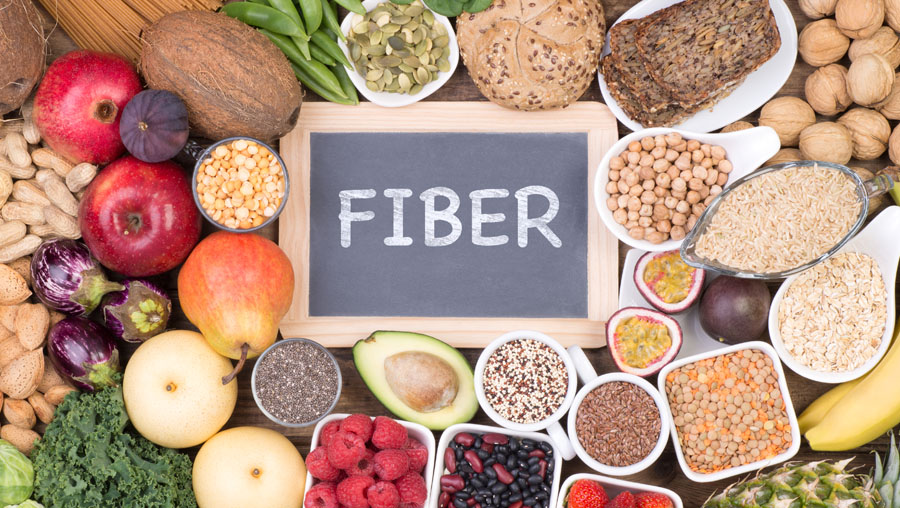Introduction
Dietary fiber is the edible parts of plants or analogous carbohydrates that are resistant to digestion and absorption in the human small intestine, with complete or partial fermentation in the large intestine.
Dietary fiber includes polysaccharides, oligosaccharides, lignin, and associated plant substances.
Dietary fiber or roughage is the portion of plant-derived food that cannot be completely broken down by human digestive enzymes.
Facts about Fibre:
Fiber is found only in plant foods. Meat and dairy products have no fiber.
Cooking does not remove the fiber from food. Additionally, drying food does not remove fiber from food.
If people who normally had low fiber suddenly doubled their intake, they could lower their risk of colon cancer by 40%.
There are two types of fiber: soluble fiber, which dissolves in water, and insoluble fiber, which does not dissolve in water. Both types are important in maintaining optimal health. They occur naturally in foods such as beans, seeds, nuts, vegetables, fruits, and whole grains.
• Soluble fiber
• Insoluble fiber
Soluble fiber – which dissolves in water – is generally fermented in the colon into gases and physiologically active by-products, such as short-chain fatty acids produced in the colon by gut bacteria. Fermentable fibers are called prebiotic fibers. Examples are beta-glucans (in oats, barley, and mushrooms) and raw guar gum. An exception is psyllium, which is a soluble, viscous, nonfermented fiber. Psyllium is a bulking fiber that retains water as it moves through the digestive system, easing defecation. Soluble fiber is generally viscous and delays gastric emptying which, in humans, can result in an extended feeling of fullness. Exceptions are inulin (in onions), wheat dextrin, oligosaccharides, and resistant starches (in legumes and bananas), which are nonviscous.
Insoluble fiber – which does not dissolve in water – is inert to digestive enzymes in the upper gastrointestinal tract. Examples are wheat bran, cellulose, and lignin. Coarsely ground insoluble fiber triggers the secretion of mucus in the large intestine, providing bulking. Finely ground insoluble fiber does not have this effect and can actually have a constipating effect. Some forms of insoluble fiber, such as resistant starches, can be fermented in the colon.
Dietary fiber consists of non-starch polysaccharides and other plant components such as cellulose, resistant starch, resistant dextrins, inulin, lignins, chitins (in fungi), pectins, beta-glucans, and oligosaccharides.
Excess intake of Dietary Fibre leads to
Too much fiber in the diet can cause
• Bloating
• Gas
• Constipation
• Cramping
• Diarrhoea
• Reduction in appetite
• Early satiety
These uncomfortable side effects of excessive fiber can occur when someone eats more than 70 grams of fiber a day.
Deficiency of Dietary Fibre leads to
Because of the important physiological effects of dietary fiber, a diet low in fiber obviously leads to altered physiology or diseases.
• Constipation
• Diarrhea
• Overweight and obesity
• Hunger
• Drop in blood sugar
• colon cancer

